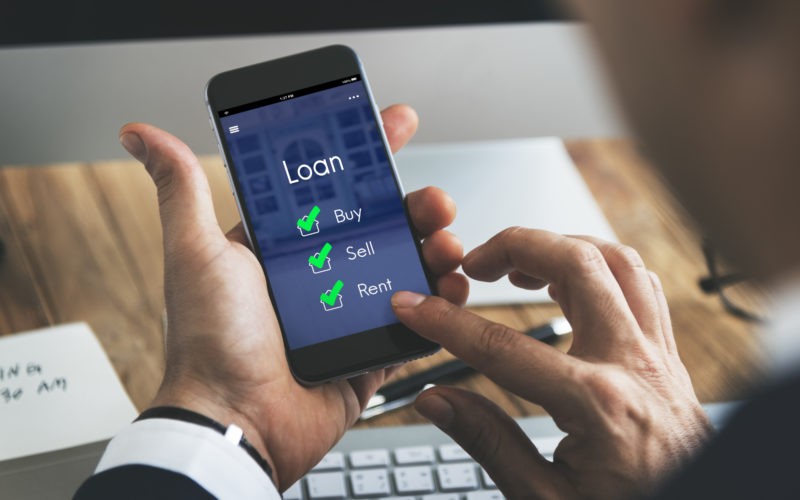Borrowing money was once a slow and complex process for many people, often involving hours of paperwork and long wait times. What has changed is the rise of fintech, which has revolutionized how loans are applied for and processed. Borrowers no longer need to visit banks in person; they can now complete applications online in minutes.
Thanks to digital innovation, approvals are often instant, and the overall experience is far more user-friendly. When speed and convenience matter, fintech delivers. This article explores why these advancements are reshaping the borrowing landscape and how they’re making access to credit faster and more transparent than ever.
Behind the Surge in Digital Loan Applications
One of fintech’s biggest innovations in the digital lending space is eliminating cumbersome paperwork and lengthy applications.
Traditional loan applications often involve numerous steps, including in-person meetings, document submission, and back-and-forth communication. Fintech companies, however, have streamlined this process by offering online platforms where borrowers can apply for different types of loans from the comfort of their homes.
These digital applications require minimal effort. In many cases, borrowers simply need to fill out an online form, upload a few documents, and submit. This streamlined process allows for faster processing, making what once took days or weeks now possible in just a matter of minutes. The ease of applying for loans from anywhere, at any time, has made the experience significantly more convenient for users, without the delays and red tape of traditional methods.
More than just about saving time, the real innovation here is about removing the barriers to entry. With digital lending platforms, borrowers don’t need to visit a bank branch or schedule an appointment.
They can apply for loans anytime and anywhere, making credit more accessible to a broader audience. For entrepreneurs, digital platforms streamline the process of applying for small business loans, including SBA 7(a), 504, and Microloans, offering guidance on eligibility, documentation, timelines, and rates. This is particularly important for individuals who might not have easy access to traditional banks or prefer to manage their financial matters digitally.
How Are Lenders Rethinking Credit Scores?
In traditional lending, credit scoring is primarily based on a borrower’s credit history, which is typically pulled from centralized credit bureaus. This system has long been the cornerstone of lending decisions.
However, it fails to account for individuals who may not have a significant credit history or may have faced financial setbacks.
Fintech is changing this by introducing more nuanced credit scoring models beyond the typical credit bureau score. These models consider alternative data, such as payment histories for rent, utilities, and even streaming services.
These insights provide a much more comprehensive view of a borrower’s creditworthiness. In some cases, fintech lenders also use sophisticated algorithms to evaluate non-traditional data points, such as social behavior or transaction histories, to assess the risk of lending to a borrower.
This shift to alternative data opens up opportunities for individuals who may have been excluded from traditional credit systems. People with limited or no credit history can now access loans based on a broader picture of their financial behavior. As a result, fintech is helping to create a more inclusive and equitable lending ecosystem.
The Rise of Fast Loan Decisions
One of the standout features of digital lending platforms is the speed at which loans are approved and disbursed.
Traditional lenders can take days, sometimes weeks, to process an application, especially when manual underwriting is involved. In contrast, fintech lenders leverage automation and sophisticated algorithms to provide instant loan decisions.
Approval is typically completed in real time, with many platforms offering instant or same-day loan disbursement.
In some cases, borrowers receive funds just hours after approval — an important shift for those needing fast access to cash. This speed is made possible by advanced technology that quickly evaluates risk and financial eligibility, streamlining the entire loan process.
This speed and convenience have turned digital lending into a go-to solution for everything from emergency expenses to planned purchases. From sudden medical costs to urgent repairs, quick access to funds and fast approval are becoming increasingly essential in our fast-paced society.
Alternative Lending as the Next Big Thing
While personal loans dominate the digital lending landscape, fintech pushes the boundaries with various alternative lending products.
For instance, Peer-to-peer (P2P) lending has emerged as an alternative to traditional bank loans. In P2P lending, borrowers can obtain loans directly from individuals, bypassing the middleman. This opens up new opportunities for borrowers and investors, often resulting in better rates and more flexible terms.
Another popular innovation is “buy now, pay later” (BNPL) services. This flexible payment structure allows consumers to spread their payments over time, offering a smooth, seamless shopping experience.
BNPL options are integrated directly into the checkout process, giving consumers more control over their budgets. This makes them a popular choice for those seeking hassle-free and straightforward financing.
These alternative lending products demonstrate how fintech is reshaping the borrowing landscape beyond traditional models. By offering more flexible options, they cater to borrowers with varying financial situations and needs. As fintech continues to advance, we can expect even more innovative solutions to emerge, further expanding access to credit for a wider range of consumers.
What’s Next for Digital Lending?
When it comes to borrowing, digital lending has completely raised the bar. From faster approvals to the inclusion of alternative data for credit scoring, fintech is rewriting the rules. Borrowers no longer have to jump through hoops or wait endlessly for loan approvals. It’s an exciting time for borrowers and lenders alike, and the future promises even more convenience and opportunity.












